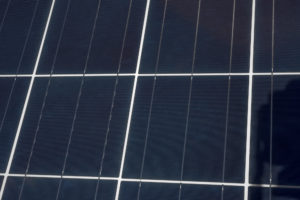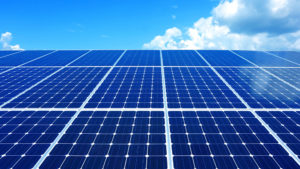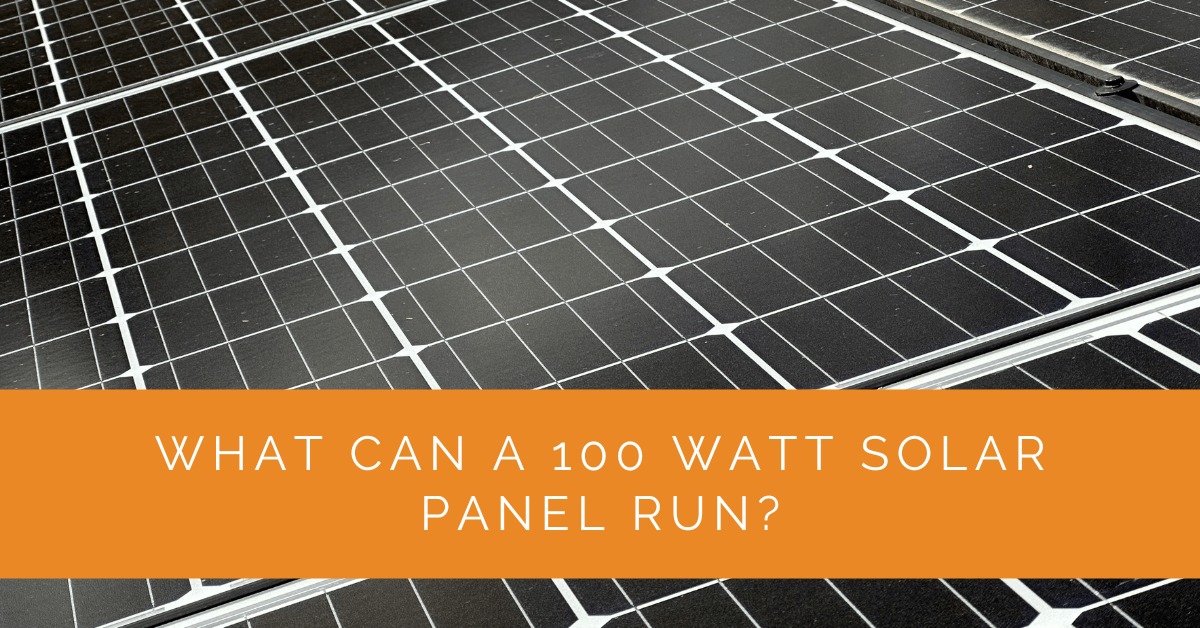Solar power is an increasingly popular and sustainable energy source. Technological advancements have made it more accessible to homeowners, outdoor enthusiasts, and those seeking portable energy solutions. A common question arises: “What can a 100-watt solar panel run?” In this article, we will explore the capabilities of a 100-watt solar panel, the factors that influence its output, and the power consumption of various appliances. So, let’s dive in!
Contents
- 1 Key Takeaways
- 2 Understanding Solar Panel Wattage
- 3 Factors Influencing Solar Panel Output
- 4 Calculating Solar Panel Output
- 5 Power Consumption of Common Appliances
- 6 Estimating Power Consumption
- 7 What a 100 Watt Solar Panel Can Run
- 8 Optimizing Energy Usage
- 9 System Design Considerations
- 10 Case Study: Maximizing the Use of a 100-Watt Solar Panel
- 11 Expert Insights From Our Solar Panel Installers About What a 100 Watt Solar Panel Can Run
- 12 Experience Solar Excellence with Us!
- 13 Conclusion
Key Takeaways
- A 100-watt solar panel can power various small devices and appliances, including LED lights, mobile devices, laptops, small fans, and camping equipment.
- When combined with a solar charge controller and battery, a 100-watt solar panel can also power larger appliances such as refrigerators, small TVs, and low-power air conditioning units for a limited duration.
- The power output and runtime of a 100-watt solar panel depend on several factors, including sunlight availability, panel orientation, battery capacity, and the energy requirements of the powered devices.
Understanding Solar Panel Wattage
Before we discuss what a 100-watt solar panel can run, it’s important to understand what wattage means in the context of solar panels. Wattage refers to the solar panel’s power output, indicating how much electricity it can generate under ideal conditions. A 100-watt solar panel is designed to produce 100 watts of power per hour under direct sunlight.
Factors Influencing Solar Panel Output
The output of a solar panel can be influenced by several factors that affect its performance and efficiency. Understanding these factors can help you maximize the power generation of your solar panel system. Let’s delve into each of these factors in greater detail:
Sunlight Intensity and Duration
Sunlight intensity determines how much energy your solar panel can produce. Direct sunlight, when the sun’s rays are perpendicular to the panel’s surface, provides optimal conditions for power generation. However, variations in sunlight intensity throughout the day due to cloud cover, atmospheric conditions, or shading from nearby objects can affect the output of your solar panel.
Furthermore, the duration of sunlight exposure is equally important. While solar panels can still generate electricity during cloudy or overcast days, but the output will be significantly lower than on bright, sunny days. It’s essential to consider the average sunlight conditions in your region when estimating the energy production of your solar panel system.
Panel Orientation and Tilt Angle
Properly orienting your solar panels to face the sun directly can enhance their energy absorption and overall performance. In the northern hemisphere, panels are typically installed facing true south to receive maximum sunlight exposure throughout the day. In the southern hemisphere, they are typically oriented towards the true north.
Moreover, adjusting the tilt angle of your solar panels can optimize their energy capture. The tilt angle is determined by your location’s latitude, with steeper angles for higher latitudes and flatter angles for lower latitudes. By aligning your panels correctly, you can ensure they receive the optimal amount of sunlight throughout the year.
Temperature and Heat Dissipation
Solar panel performance is also influenced by temperature. As the temperature of a solar panel rises, its efficiency tends to decrease. Most solar panels operate best at moderate temperatures, typically around 25 degrees Celsius (77 degrees Fahrenheit). Higher temperatures can lead to a drop in voltage and overall output.
To counteract the impact of temperature, many solar panels are designed with materials and technologies that facilitate heat dissipation. This allows the panels to maintain lower operating temperatures, improving performance and power generation.
Dust, Dirt, and Obstructions
The accumulation of dust, dirt, or other particles on the surface of your solar panels can obstruct sunlight and reduce their energy production. It’s important to regularly clean your panels to ensure they operate at their maximum efficiency. Depending on the environmental conditions in your area, you may need to clean them more frequently.
Additionally, obstructions such as trees, buildings, or other structures that cast shadows on your solar panels can significantly impact their output. Shading can cause a phenomenon known as “panel mismatch,” where shaded cells create a bottleneck effect, reducing the overall energy production of the panel. Careful planning and positioning of your solar panels can help minimize shading effects and optimize power generation.

Calculating Solar Panel Output
To calculate the actual output of a 100-watt solar panel in real-world scenarios, it’s crucial to consider its location and the aforementioned influencing factors. A general rule of thumb is to estimate the solar panel’s average daily output by multiplying its wattage by the number of peak sun hours in a particular area. Peak sun hours represent when the sun’s intensity is sufficient for optimal solar panel performance.
For instance, if your location receives an average of 5 peak sun hours per day, the estimated daily output of a 100-watt solar panel would be:
100 watts * 5 hours = 500 watt-hours (or 0.5 kilowatt-hours)
This estimation provides a rough idea of the solar panel’s daily energy production.
Power Consumption of Common Appliances
To determine what a 100-watt solar panel can power, it’s important to consider the power consumption of various appliances. Here’s a breakdown of the average power consumption of some common household devices:
- LED Lightbulb (9-13 watts): LED lightbulbs are energy-efficient and consume significantly less power than traditional incandescent bulbs.
- Laptop (50-100 watts): Laptops have varying power requirements depending on the model and usage.
- Smartphone (5-10 watts): Charging a smartphone typically requires minimal power.
- Tablet (10-20 watts): Tablets consume slightly more power than smartphones during charging.
- Electric Fan (50-75 watts): Running an electric fan requires moderate power.
- Portable Cooler (35-60 watts): Cooling devices like portable coolers or refrigerators draw power to maintain low temperatures.
- Television (80-200 watts): The power consumption of televisions can vary depending on the screen size and technology.
These approximate power consumption estimates can vary based on specific device models and usage patterns.
Estimating Power Consumption
To determine the number of hours a 100-watt solar panel can power a specific device, divide the panel’s daily energy production (in watt-hours) by the device’s power consumption (in watts).
Let’s take an example to illustrate this. Suppose you have a laptop with a power consumption of 60 watts. Using the estimated daily output of our 100-watt solar panel (500 watt-hours or 0.5 kilowatt-hours), we can calculate how many hours the solar panel can power the laptop:
0.5 kilowatt-hours / 60 watts = 8.33 hours
In this scenario, the 100-watt solar panel can power the laptop for approximately 8.33 hours daily. Remember that this calculation assumes ideal conditions and doesn’t account for losses due to system inefficiencies or battery storage.
What a 100 Watt Solar Panel Can Run
Now that we understand the power consumption of common appliances and how to estimate solar panel output, let’s explore what a 100-watt solar panel can power:
- LED Lights: A 100-watt solar panel can power several LED lightbulbs, illuminating indoor or outdoor spaces during the evening or night.
- Small Electronics: Charging smartphones, tablets, or small electronic devices is well within the capabilities of a 100-watt solar panel. It can keep your devices powered up on the go or during power outages.
- Portable Fans: A 100-watt solar panel can run portable fans, offering relief during hot summer days.
- Camping Equipment: It can power camping gear such as portable coolers or refrigerators, ensuring your food and beverages stay fresh during outdoor adventures.
- Communication Devices: Solar panels can power devices like radios or walkie-talkies, enabling communication in remote areas or during emergencies.
- Water Pumps: In certain applications, a 100-watt solar panel can provide enough power to run small water pumps, making it useful for irrigation or water circulation systems.
- RV or Boat Appliances: For recreational vehicles (RVs) or boats, a 100-watt solar panel can power lighting, small appliances and charge auxiliary batteries.
It’s important to note that the devices that a 100-watt solar panel can power will depend on the specific power requirements of the devices and the availability of sunlight in your location.

Optimizing Energy Usage
Optimizing energy usage is crucial to make the most of a 100-watt solar panel’s capabilities. Here are a few tips to maximize your solar power system’s efficiency:
- Energy-Efficient Appliances: Choose energy-efficient devices that consume less power. LED lightbulbs, for example, are a great choice for efficient lighting.
- Power Strips and Timers: Use power strips and timers to control the power supply to multiple devices, ensuring they are only powered when needed.
- Battery Storage: Consider adding a battery storage system to store excess solar energy during the day for use during nighttime or when sunlight is limited.
- Solar Charge Controller: Incorporate a solar charge controller into your system to regulate the charging of batteries and prevent overcharging or discharging.
- System Monitoring: Install a system monitoring solution to track your solar panel’s performance and energy production, allowing you to identify any issues and optimize efficiency.
By implementing these strategies, you can maximize your 100-watt solar panel and extend its capabilities.
System Design Considerations
When setting up a solar power system with a 100-watt panel, there are a few important considerations to keep in mind:
- Battery Capacity: To store the energy generated by the solar panel, you will need to connect it to a battery or battery bank with sufficient capacity. Lead-acid batteries are commonly used for this purpose due to their affordability and reliability.
- Inverter Selection: If you plan to power AC (alternating current) appliances, you’ll need an inverter to convert the DC (direct current) output of the solar panel and batteries into AC power.
- Wiring and Connections: Ensure that the wiring and connections in your solar power system are properly sized and installed to handle the current and voltage requirements.
- Orientation and Placement: Install the solar panel in a location that receives maximum sunlight exposure throughout the day, avoiding shading from trees or nearby structures. Adjust the panel’s tilt angle to optimize sunlight absorption.
- Expandability: Consider the scalability of your solar power system. If you anticipate the need for more power in the future, plan for expansion by selecting components that can be easily integrated into a larger system.
By considering these design considerations, you can create an efficient and reliable solar power system using a 100-watt solar panel.
Case Study: Maximizing the Use of a 100-Watt Solar Panel
Background
A family of outdoor enthusiasts approached Solar Panels Network USA, looking for a reliable and portable energy solution to power their devices during camping trips. They wanted to understand what a 100-watt solar panel could run and how to optimize its use for their needs.
Project Overview
We conducted an initial consultation to identify the family’s power requirements, focusing on their essential devices and appliances. The goal was to ensure that the 100-watt solar panel could meet their needs efficiently, even in remote locations.
Implementation
- Device Assessment: We evaluated the power consumption of the family’s devices, including LED lights, smartphones, a small portable refrigerator, and a laptop.
- System Setup: A 100-watt solar panel was paired with a solar charge controller and a deep-cycle battery to store excess energy. This setup ensured continuous power supply even during cloudy conditions or nighttime.
- Orientation and Placement: We advised on the optimal orientation and tilt angle for the solar panel to maximize sunlight absorption. The panel was mounted on a portable stand that could be adjusted as needed.
Results
- LED Lights and Electronics: The 100-watt solar panel efficiently powered multiple LED lights for evening and nighttime use. It also charged smartphones, tablets, and a laptop, providing reliable power for communication and entertainment.
- Portable Refrigerator: The solar panel, combined with battery storage, could run a small portable refrigerator for several hours, keeping food and beverages cool during the day.
- Extended Usage: The inclusion of the solar charge controller and battery significantly extended the usability of the solar panel. Even on days with limited sunlight, the stored energy ensured that essential devices remained powered.
Summary
This case study demonstrates the practical applications of a 100-watt solar panel for outdoor and remote use. By carefully assessing power needs and optimizing system components, Solar Panels Network USA enabled the family to enjoy their camping trips with a reliable and sustainable power source. The setup not only provided convenience but also showcased the versatility and efficiency of portable solar solutions.
Expert Insights From Our Solar Panel Installers About What a 100 Watt Solar Panel Can Run
A 100-watt solar panel is quite versatile. It can power LED lights, charge small electronics like smartphones and tablets, and even run portable fans, making it ideal for camping and emergency use.
Senior Solar Technician
While a 100-watt solar panel can power several small devices, its efficiency depends on factors like sunlight availability and panel orientation. Pairing it with a battery and solar charge controller can extend its capabilities to run larger appliances for limited periods.
Lead Solar Installer
Optimizing energy usage is key with a 100-watt solar panel. Using energy-efficient appliances and incorporating battery storage can maximize the panel’s effectiveness and provide reliable power during outages or off-grid situations.
Solar Energy Consultant
Experience Solar Excellence with Us!
Trust in Solar Panels Network USA, where our seasoned experts deliver top-quality solar solutions for homes and businesses nationwide. With a legacy of countless successful installations and a commitment to sustainable energy, we’re your reliable partner in the solar journey. Ready for a brighter, eco-friendly future? Call us now at (855) 427-0058 and harness the power of the sun!
Conclusion
In conclusion, a 100-watt solar panel can power various small devices and appliances. Understanding the power consumption of different devices and estimating solar panel output allows you to determine what can be run with a 100-watt panel. LED lights, small electronics, portable fans, camping equipment, and communication devices are some examples of what can be powered. By optimizing energy usage and considering system design factors, you can maximize the benefits of a 100-watt solar panel.
Harnessing solar energy provides a sustainable power source and offers independence and flexibility in various scenarios, from outdoor adventures to backup power during outages. As technology advances, solar power systems are becoming more efficient and affordable, making it an increasingly viable option for individuals and communities alike.
So, whether you’re a homeowner, outdoor enthusiast, or simply looking for alternative energy solutions, a 100-watt solar panel can be a valuable asset, empowering you to tap into the sun’s abundant energy. Embrace the power of solar and unlock a greener future!
About the Author
Solar Panels Network USA stands at the forefront of solar energy solutions, driven by a team of seasoned solar engineers and energy consultants. With over decades of experience in delivering high-quality solar installations and maintenance, we are committed to promoting sustainable energy through customer-centric, tailored solutions. Our articles reflect this commitment, crafted collaboratively by experts to provide accurate, up-to-date insights into solar technology, ensuring our readers are well-informed and empowered in their solar energy decisions.

